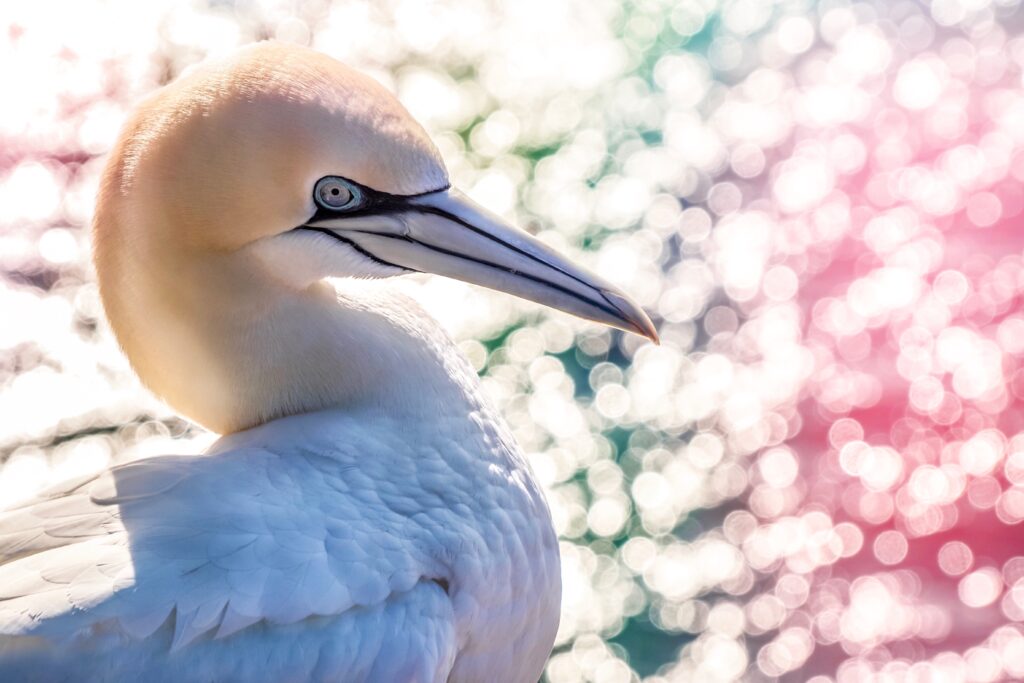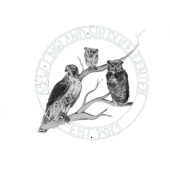
Pelagic birds are birds that spend a large portion of their lives on the open ocean. They can be found thousands of miles offshore, but can get blown on to land during high winds and storms. The only other time they come inland is to breed. At the Cape Wildlife Center, we can get many of these birds as patients during hurricanes and winter storms. They are usually found stranded on land, exhausted, thin and sometimes injured from the winds and the fall. The species we see include Northern Gannets, Shearwaters, Murres, Petrels, Fulmars, Razorbills, and Dovekies. These birds vary greatly in size and description from each other, but they all live on open water, dive for food, and are excellent swimmers. They have exceptionally long thin wings that allow them to fly for long periods without rest. Some can stay in flight for many days or weeks and can also sleep in flight. They have a special salt gland that extracts salt from the seawater they drink so it doesn’t accumulate to toxic levels.
This is the time of year that we start seeing these injured birds appear. Most common injuries include fractures, abrasions, ruptured air sacs, head injuries, emaciation, and fishing gear entanglement. The oil and debris on the ground can do major damage to their feathers. It is critical that their feathers are grown in and they are waterproofed before release. Waterproofing is needed especially for any bird that spends long periods of time on the water. These birds are very difficult to treat in captivity so we try to get them healed and into our seabird pool to be prepped for release as soon as possible.
Because Pelagic birds stay mostly out to sea, many people have never experienced seeing one unless it is injured, or they have seen one while boating.
I want to introduce to three species of Pelagic birds that happen to be my favorites. The first is the Northern Gannet, a large, startling white bird with beautiful blue eyes and a long, thin grey bill. This is probably the Pelagic bird we admit the most at CWC. When not as sea, they nest on both sides of the Atlantic in colonies of up to 60,000 pairs . The nearest one is in Bonaventure Island in Quebec. Visiting there is a trip of a lifetime. Gannets are streamlined for plunge diving, and can dive from 36-200 ft, and hit the water at 72 mph to get their prey. They swallow their prey (fish) whole underwater. You will never see them flying with a fish in their mouth like an osprey. We have successfully treated many Gannets and have been able to release them back in the wild, which always requires a boat trip.
Shearwaters are a group of Pelagic birds that belong to the Petrel family. They are a medium-sized long winged bird. They fly close to the water, skimming the wave tops . They dive for food (fish), and can dive up to 230ft while feeding. They leave the ocean to breed on islands or coastal cliffs.
Dovekies are a tiny, black and white member of the Auk family, about 7” long. They are the smallest of the Auks, and look like little penguins. They nest above the Arctic Circle and come down south in winter as far as New England. They also dive deeply , about 90ft, to hunt for food which includes zooplankton, crustaceans and small fish.
While treating Pelagic birds is always a challenge, it is also a privilege to be able to see them, and possibly hep them to go back to the ocean to be elusive once again.
A pelagic bird we have never seen at the center is an Albatross, but I want to mention it because it holds a few unique records. The oldest recorded living bird is a Layson albatross named Wisdom who was banded in 1956 and lived at least to the age of 65 successfully raising chicks. The wandering Albatross has the longest wingspan of any bird , 8-12 feet tip to tip. The Gray Headed Albatross has the fastest level flight of 79 mph. Fascinating birds.
To see some Pelagic birds, you can take a Pelagic Bird cruise from a number of places, including Chatham Mini-Pelagics that leaves from the Chatham Fish Pier. These types of birds are a must see for any birder.
To learn more about the Cape Wildlife Center or help in their mission, visit www.capewildlifecenter.com or call 508 362-0111.
Caryn Ritchie is the volunteer coordinator for the Cape Wildlife Center and holds both a Massachusetts wildlife rehabilitator’s license and a federal permit to rehabilitate migratory birds.

Recent Comments